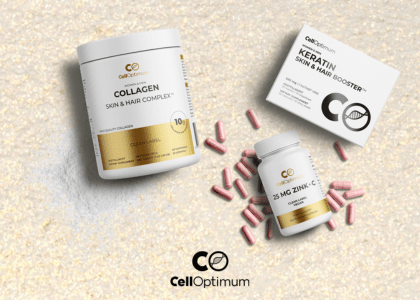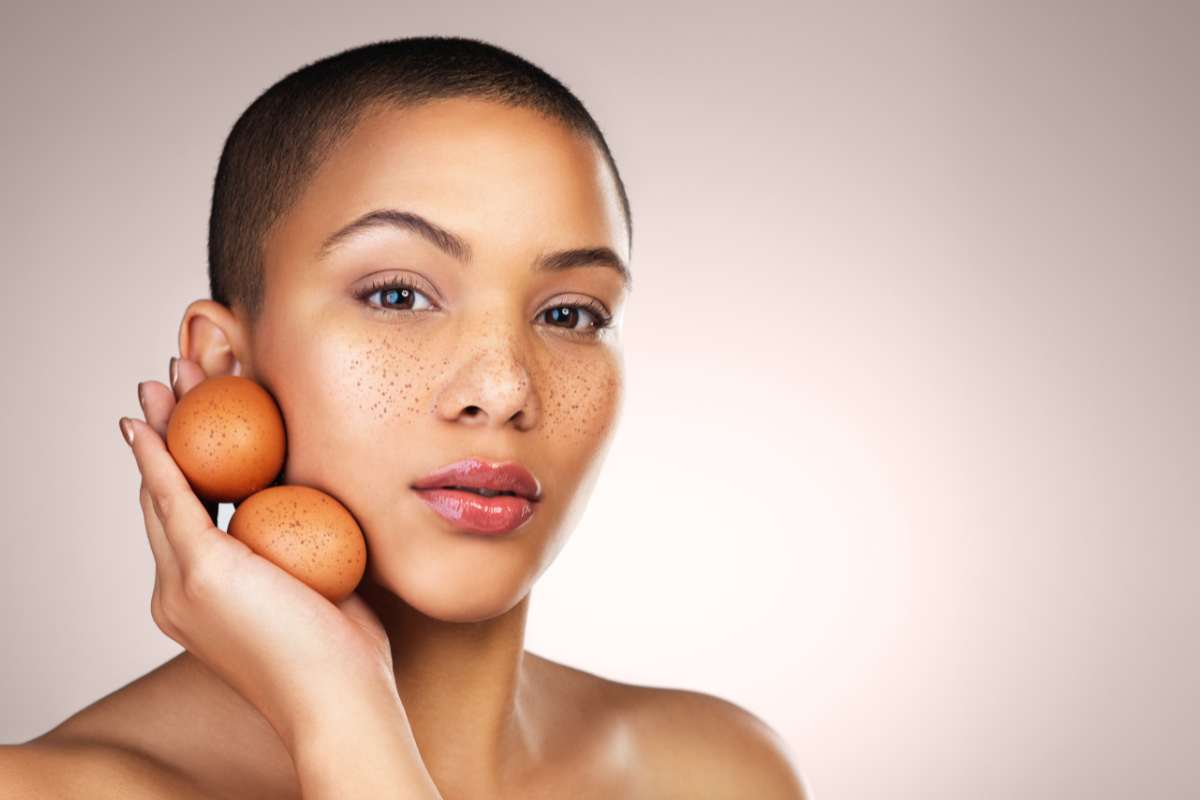Collagen in vitiligo

Collagen in vitiligo
Somewhere between 0.5 and 2.0 percent of the global population has vitiligo, a condition that affects skin pigmentation. In vitiligo, the cells that "make" the skin's pigment are destroyed, these cells are called melanocytes. This results in white and blotchy areas on the skin, and vitiligo treatment can take a long time to process. In vitiligo, you get white spots on the skin, and sometimes white hairs too. This is due to a lack of pigment.
For some, vitiligo can appear on the face, neck or hands, which can cause a dramatic and traumatizing change in appearance. For others, it can affect mucous membranes such as the mouth, nose and genitals, as well as the retina. If a spot of vitiligo appears in an area of hair growth, the hair will be white or very light gray.
While researchers have not determined a universal cause, autoimmune disorders appear to be the most common cause of vitiligo; however, a deficiency of certain vitamins and minerals, as well as exposure to certain industrial chemicals, can also cause this condition.
Finding the right treatment for vitiligo takes time; even the most common conventional treatments can take weeks, months or even years before the appearance improves. Conventional vitiligo treatment such as topical creams, light therapy, photochemotherapy, permanent pigmentation treatment of healthy skin, surgery and cosmetics are often prescribed. But unfortunately, all these treatments have side effects.
The research continues. Currently, there are over 75 studies listed on clinicaltrials.gov looking for answers and solutions to this aggravating condition.
What is vitiligo?
Vitiligo is a "pigmentation disorder" in which the melanocytes, the cells responsible for giving our skin, hair and eyes their color, are destroyed. The result is white patches of skin that blend with normal skin tones.
More visible areas such as the face, neck, hands, elbows, knees and feet are often affected. But vitiligo can appear anywhere on the body. Vitiligo is not contagious; however, it may have hereditary or genetic markers. Researchers are still investigating causes, risk factors, and effective treatments.
There are three types of vitiligo:
- Generalized vitiligo. White patches of skin develop symmetrically on both sides of the body, affecting the same body parts at the same time.
- Segmented vitiligo. Usually this occurs in younger children where the white areas only appear on one side of the body.
- Localized Vitiligo. The white spots appear on one or two parts of the body, progress and spread for a short time, and then stop.
Vitiligo signs and symptoms
The hallmark of vitiligo is white patchy areas of skin; however, other parts of the body can also be affected:
- Light and gray tone of the scalp that starts at an early age
- White or gray eyelashes and/or eyebrows
- White or gray beard
- Loss of color in the mucous membranes
- Loss of color in the retina
Causes and risk factors for vitiligo
Autoimmune diseases including Addison's disease, thyroid disease, pernicious anemia and diabetes are believed to be the root cause of vitiligo. However, some studies indicate that people diagnosed with this condition often have deficiencies in certain vitamins such as B12, folic acid (vitamin B9), copper and zinc.
In addition, heredity and genetics can also play a role in developing vitiligo, as can stress, sunburn, and exposure to certain chemicals. In some cases, immunotherapy for melanoma and other skin cancers can also cause vitiligo.
Vitiligo treatment
The best types of vitiligo treatment – whether conventional or natural – all take time before any results show. Some people can see results in just a few weeks, while for others it can take nine months, a year or longer - before you see any improvement.
Treatment with needles stimulates collagen and elastin production
Treatment with needles has been shown to work as a natural treatment for vitiligo, for the repigmentation of the skin in vitiligo. Previous studies show that this works, especially when the condition has stabilized and is not responding to other treatments.
"Needling" is a process where a professionally trained person uses a medical roller equipped with 200 or more fine surgical needles, on the skin. Currently, needles are mostly used to stimulate collagen and elastin production, promote scars and stretch marks.
VITAMIN B12 AND FOLIC ACID (VITAMIN B9)
A 2-year study conducted at the University Hospital in Sweden found that over half of the trial participants experienced repigmentation when combining vitamin B12, folic acid (vitamin B9) and exposure to the sun's rays. The spread of vitiligo stopped in 64 percent of patients. Researchers note that the areas that received direct sunlight showed the most improvement.
ZINC
Another common deficiency found in people with this condition is zinc. Zinc supports a healthy immune system, fights cancer, fights diabetes (an autoimmune condition commonly associated with vitiligo), supports proper nutrient absorption, and helps repair and heal muscles, tissues, and bones.
COPPER
While researchers disagree on whether copper deficiency causes vitiligo or is a result of vitiligo, eating foods rich in copper may be beneficial. In some healing arts, water is often stored in a copper vessel overnight before drinking. It is believed that copper stimulates the function of melanocytes, increases melanin and repigment the skin.
BETA CAROT
In general, carotenoids are important for our overall skin health. Beta-carotene, lutein, lycopene and zeaxanthin are found in foods such as sweet potatoes, carrots, kale and tomatoes. Beta-carotene is associated with anti-cancer properties, lutein and zeaxanthin with eye health and lycopene with a lower risk of prostate cancer. In addition, these powerful carotenoids can help reduce inflammation, promote eye health, and protect the skin from damage, including melanoma.
VITAMIN C
Like folic acid (vitamin B9) and vitamin B12, many people with vitiligo are also deficient in vitamin C. Vitamin deficiency is more common than many people think, and for people with vitiligo it is important to help slow cell damage, fight free radicals and to build the body's levels of collagen required for healthy bones, joints, ligaments, cartilage and healthy skin. The best way to get the vitamin C you need every day is to eat fresh, organic fruits and vegetables.
VITAMIN D
Many people with vitiligo are sensitive to the sun. Because of this, it is important to eat plenty of foods rich in vitamin D, and a supplement with extra vitamin D may be necessary. Especially during the winter season - which applies to most people who live in countries where we are not exposed to sunlight during the darker months of the year. The best sources of vitamin D are wild fish including sardines, salmon, mackerel and tuna; and milk, eggs and mushrooms.
- Tags: Hud/Skin Kollagen/Collagen






